A lot of staring at screens happens at Mobile World Congress – whether tapping away at your own rapidly depreciating handset, ogling smarter ones, deciphering the agenda, or (in my case) simply trying to download the app that gets you a free coffee.
‘Mobile Is Everything’. The clue is in the slogan, but Barcelona’s MWC isn’t just about mobiles. Amid the flashy product launches a broad range of technologies are democratising education, health care and knowledge, as major players try to connect the world’s four billion people who still aren’t online.
The premier tech event of the year also hosts 4YFN (4 Years From Now), a platform for innovators. This year the Atlas partnered with 4YFN as we share their belief that talent, energy and creativity can be a driving force for change. My MWC mission was to navigate phones and drones, gadgets and wearables, and apps that track cats, dogs, kids and elders, to find ten innovative projects with lasting positive impact.
1. The human side of VR
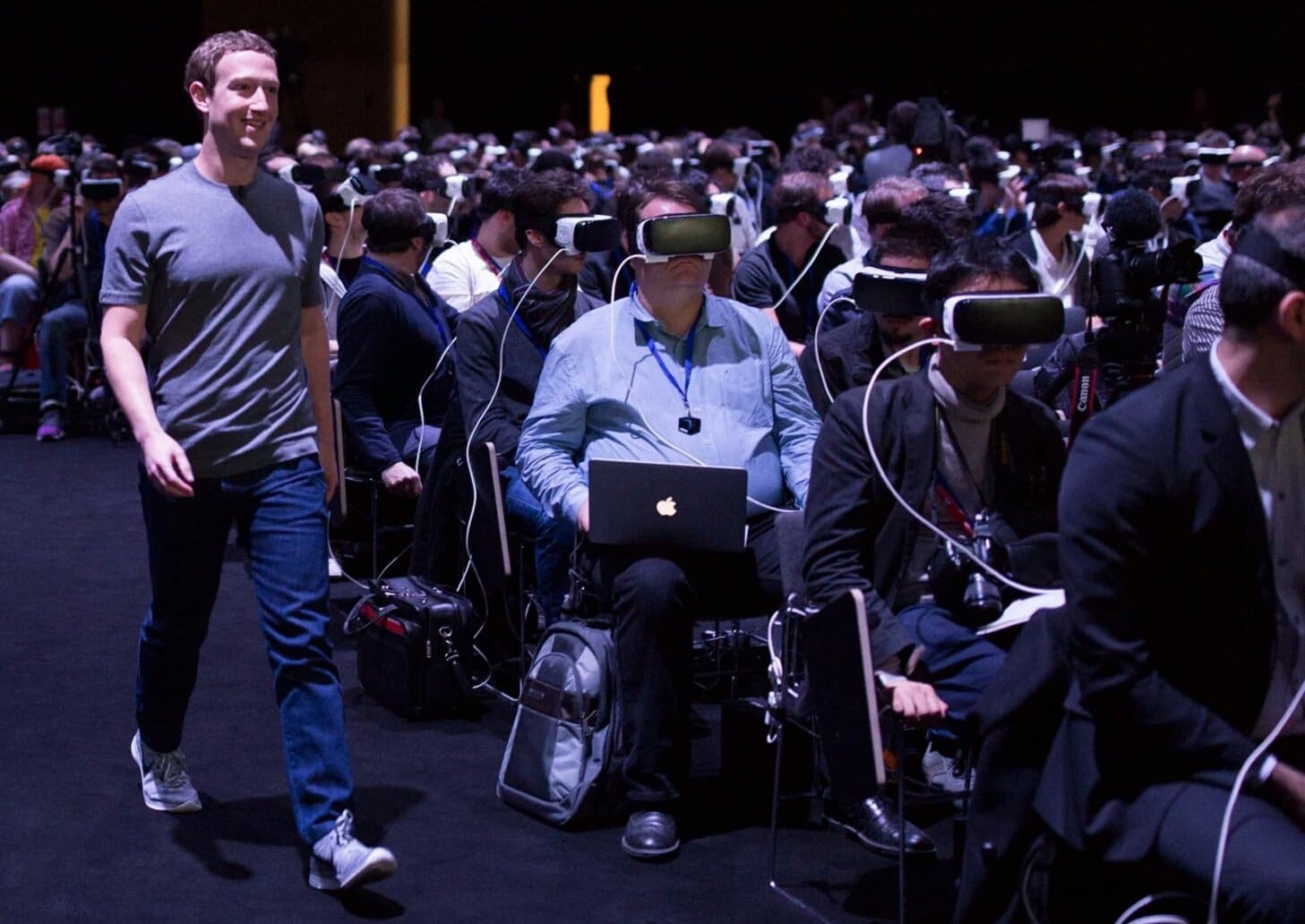
This photo freaked out the world, but there’s more to MWC than Zuckerberg
Virtual reality was the star of MWC2016, and not just because Mark Zuckerberg gave the masses its first taste of Facebook’s ‘Social VR‘.
Within Innovation City, a Samsung Gear rollercoaster came with a nausea warning. At a virtual ski-jump, a dead set woman in a headset was demanding to be called ‘Natasha the Eagle’. “This is an Oculus Rift,” one guy explained as he strapped me into a three-minute VR commercial for connected living and shopping. “That guy from Facebook owns it, but I’m not sure what it means.” With red goggle marks, I searched for the less disconnected and more useful side of VR.
With the tagline ‘Democratising mental care treatments’, Psious is the first online VR tool for therapists, helping both patients and mental health practitioners. Based on imagination, it helps deal with anxiety and phobias, and aids relaxation.
At the Atlas we’re big fans of using advances in VR technology as a catalyst for empathy. I also met Nicolas Chibac from Germany’s Spice VR, who has fitted a Spherie VR drone with a 360° camera to make immersive documentaries. Currently in production on a film that follows a refugee’s journey, Chibac is a fan of Vrse director Chris Milk. Learn more about VR’s ability to make us more human here.
2. Compassionate robots

Pepper talks, dances and ‘feels’
This year’s crowd-pleasers included Pepper, the first robot to recognise human emotions, (who was being very vocal about ‘his’ skills) and LG’s Rolling Bot, which allows you to check up on your house and play with (and potentially terrorise) your pets when you’re away from home. (Yes, really.)
But the most useful was this six-wheeler delivery bot from Starship Technologies. Google and Amazon have both attempted to launch aerial home delivery systems, but we can thank Skype for these self-driving robots.
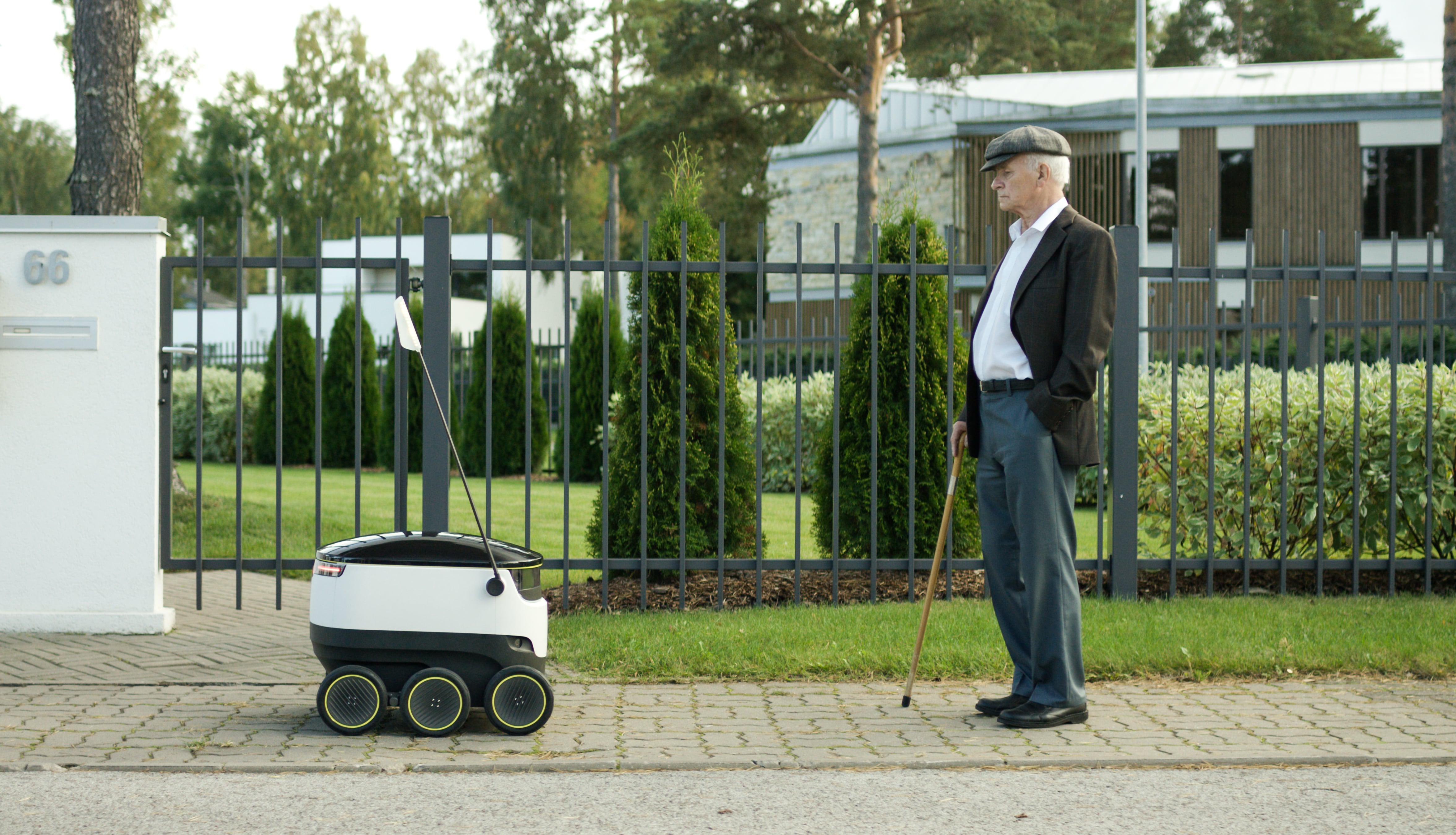
This shopping bot will help those with disabilities or difficulty moving
Entirely earthbound, they can deliver up to 40lbs (about two shopping bags) locally within 30 minutes and look set to shake up the delivery business from 2017. Read more about the shopbot on the Atlas.
3. Refugee tech

RFRC was created by Hamburg’s Harald Neidhardt, founder of MLOVE, and Mirko Bass, an executive at Cisco
The Port of Hamburg is one of the world’s largest container ports. Also known as Germany’s ‘Gateway to the World’, it’s on the frontline of the refugee crisis, one of the largest humanitarian emergencies of our time. One of the city’s 20-foot shipping containers had been transported to 4YFN and transformed into a Refugee First Response Center – a mobile medical emergency clinic with live video translation service.

The team of 750 medically-trained interpreters speak 50+ languages from Farsi to Tigrinya
Providing much-needed connectivity and language help for refugees who don’t speak German, this project is a great example of harnessing technology to help cope with the 1.1 million asylum seekers the country took in last year. Neidhardt aims to expand into ‘telemedicine’ and install units along the whole migration route, all the way to Lesbos.
“We can provide access to innovation and the latest technology for a higher purpose.” Harald Neidhardt explained. “Isn’t that rewarding? That you as an individual can really create a tangible solution that innovates on a current crisis and helps those in need on your doorstep?”
Mike Butcher, editor of TechCrunch, is looking for more ways like this to ‘hack’ the refugee crisis. He has created a movement that brings the tech community together with NGOs and agencies. Techfugees uses conferences, hackathons and crowdsourcing to discuss the projects that solve the numerous challenges faced by refugees, such as 3D printing prosthetic limbs or Kiron Open Higher Education, which offers the first online refugees exclusively for refugees. Sign up here to join the conversation.
4. The good people’s operator
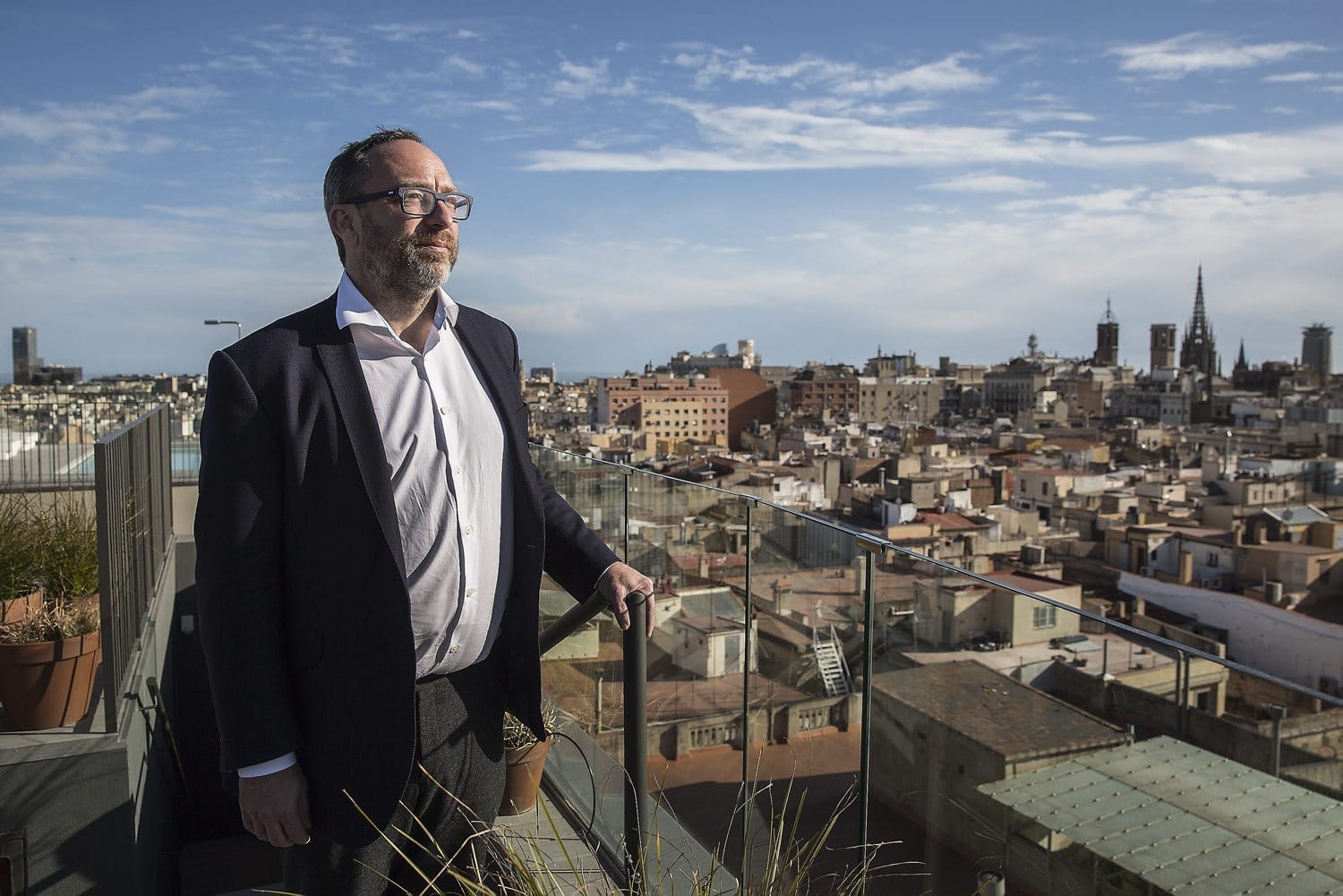
The People’s Operator will launch in Spain and the rest of the world next year. Photo: ARA/ Pere Virgili
Jimmy Wales, founder of Wikimedia Foundation, delivered a keynote at 4YFN to present his new project, The People’s Operator. The UK and US-based mobile operator enables the user to donate 10% of their phone bill to a good cause of their choice, at no extra cost, and 25% of the profits go to educational charities. For now, he plans to launch ad-free social network TPO.com. It won’t have a Facebook page as its members are “a subset of a larger world interested in improving the planet”.
Like the Atlas, Wales believes that by doing good the story spreads online through word of mouth, not advertising. He plans to show people they can gain customers by doing good, and won over many local fans by highlighting the importance of preserving minority languages such as Catalan.
5. A flexible future made of graphene

Graphene is the strongest and lightest material known to science at this present time
Graphene is set to transform our world as we know it. In MWC16’s Graphene Pavilion you could touch prototypes such as wearable curved organic LCDs (see above), flexible fingerprint sensors, VR gloves and a flexible and transparent heart rate sensor.
Also present were Graphene Flagship, who recently demonstrated interfacing graphene with neuron cells to measure the brain’s electrical impulses, in order to recover sensory functions. Graphene’s potential uses also include longer-lasting standard batteries that could revolutionise electric cars and it could filter out salt in seawater, making oceans a drinkable water source. Read more about the wonder 2D crystal on the Atlas.
6. The future of transport

The new transportation grid will fire human beings in capsules from one coastal city in California to another
Dirk Ahiborn, CEO of Hyperloop Transportation Technologies, was also in Barcelona this week. Described by Tesla’s Elon Musk as “a cross between a rail gun, the concord and an air hockey table”, Hyperloop will be passenger-ready by 2018.
“The most important part of the technology is that it will produce more energy than it uses,” Ahiborn explained. “In addition, we will use the wind kinetic energy.” One day it could be possible to live 100 kilometres from Barcelona and be downtown in 10 minutes. Read more about Hyperloop, ‘the fifth mode of transport’ on the Atlas.
7. Democratising education

Israel Ruiz believes education has a problem
In a keynote about the future of education which opened with the sound of gravitational waves, MIT’s Israel Ruiz talked about freedom, passion, challenge, possibility and collaboration and extolled the work of One Laptop Per Child, a project that gives tablets to remote rural villages in Ethiopia to teach children to teach themselves.
8. Mind tracking technology

The superbly-named Hans Supèr
Braingaze is a spin off created in 2013 from the University of Barcelona (UB) and The Catalan Institute for Research and Advanced Studies (ICREA). The highly ranked Dutch neurobiologist Hans Supèr developed this eye tracking software with entrepreneur Laszlo Bax to study the pattern of neurocognitive dysfunctions found in ADHD in children. It is based on the discovery of the predictability of very small involuntary eye movements that go one step beyond eye tracking to ‘see into your mind’.
In March 2016 the pair will present their first product, the BGaze ADHD Testing at the European Psychiatry Congress in Madrid.
9. Apps for good
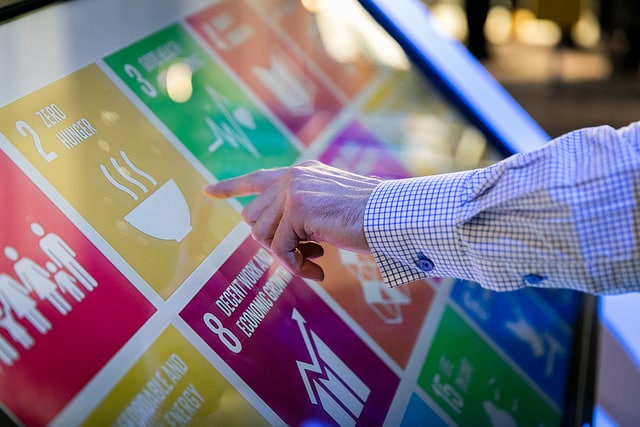
The good will out
Some more MWC16 discoveries:
Familyar connects the elderly with family, friends and healthcare services through a simple tablet and app, to prevent loneliness and isolation of the elderly, as well as providing medication reminders.
Madrid-based Fruitbull, the ‘Bloomberg for fruits and vegetables’, fights food waste. The app provides real-time pricing information for fruits and vegetables to producers, distributors and supermarkets and is extending its coverage to more of Europe, then Latin America.
Talkitt is Voicitt’s software application that helps with motor, speech or cognitive difficulties. It translates unintelligible voice into clear, understandable speech in real time, enabling those with motor, speech or cognitive disabilities to communicate.
Mapp4all wants to provide a ‘Wiki of universal accessibility‘ with a complete digitalisation of accessibility in Barcelona, the first city in the world to offer this tool. The interactive map points out facilities for groups with any kind of motor, visual or hearing impairment, as well as for the elderly and parents with babies.
Is there such a thing as an altruistic act? The Social Coin asks people to ‘pay it forward’ by doing good acts and causing a butterfly effect.
Cyclists were impressed by the See.Sense ICON connected bike lights, which flash so you can be seen by road users, while its sensors log data about air pollution, potholes and other conditions to feed back to the local authority so they can create safer roads.
10. An alternative congress
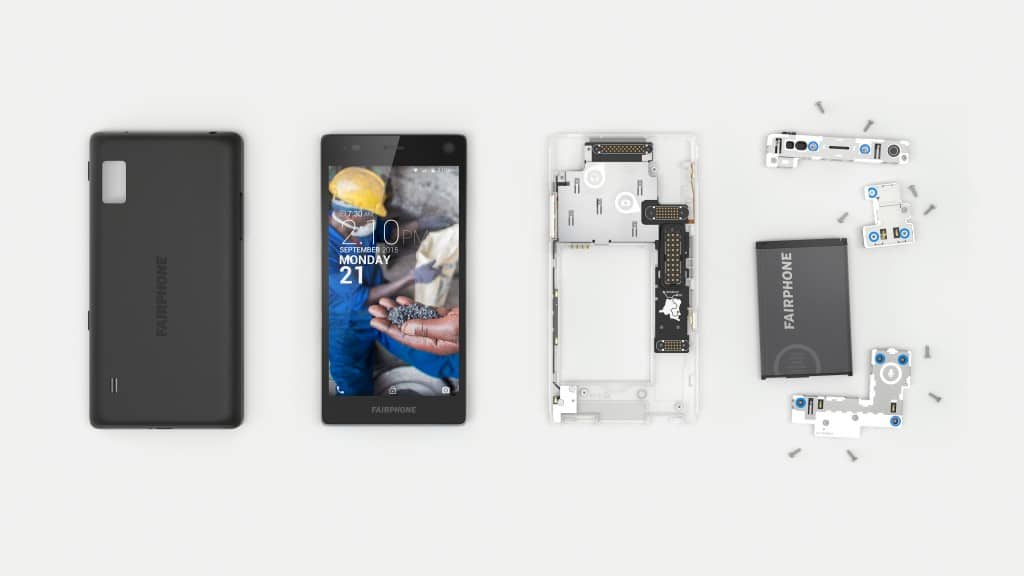
Fairphone develops phones that use ethically sourced precious metals
While all this was going on, a few blocks away activists created their own event – The Mobile Social Congress. It demonstrated another side to the sector accused of ignoring rights abuses, with a presentation from Catalonia’s own DIY mesh network Guifi.net and showcased its very own fair trade smartphone, “designed and produced with minimal harm to people and planet.” Read more about Fairphone on the Atlas.
Until next year 4YFN, it’s been a pleasure partnering with you. We look forward to seeing what advances 5G and VR make in the interim.

Want to pay it forward? Submit innovative projects with lasting positive impact here.

See you in 2017
Main image: Samsung.

